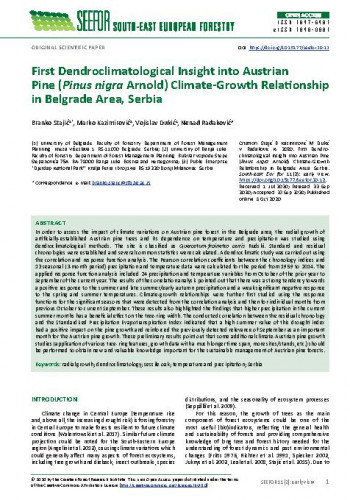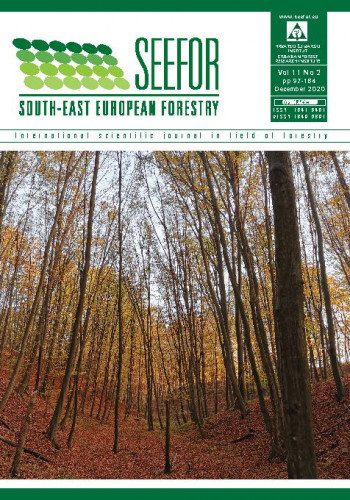In order to assess the impact of climate variations on Austrian pine forest in the Belgrade area, the radial growth of artificially-established Austrian pine trees and its dependence on temperature and precipitation was studied using dendroclimatological methods. The site is classified as Quercetum-frainetto cerris Rudski. Standard and residual chronologies were established and several common statistics were calculated. A dendroclimatic study was carried out using the correlation and response function analysis. The Pearson correlation coefficients between the chronology indices and 13 seasonal (3-month period) precipitation and temperature data were calculated for the period from 1959 to 2014. The applied response function analysis included 24 precipitation and temperature variables from October of the prior year to September of the current year. The results of the correlation analysis pointed out that there was a strong tendency towards a positive response to the summer and late summer/early autumn precipitation and a weak significant negative response to the spring and summer temperatures. Climate-growth relationships were further first studied using the response functions for the significant seasons that were detected from the correlation analysis and then for individual months from previous October to current September. These results also highlighted the findings that higher precipitation in the current summer months has a beneficial effect on the tree-ring width. The conducted correlation between the residual chronology and the Standardised Precipitation Evapotranspiration Index indicated that a high summer value of this drought index had a positive impact on the pine growth and reinforced the previously detected relevance of September as an important month for the Austrian pine growth.
Sažetak

 South-east European forestry : SEEFOR : international scientific journal in field of forestry : 11,2(2020) / editor-in-chief Ivan Balenović.
South-east European forestry : SEEFOR : international scientific journal in field of forestry : 11,2(2020) / editor-in-chief Ivan Balenović.